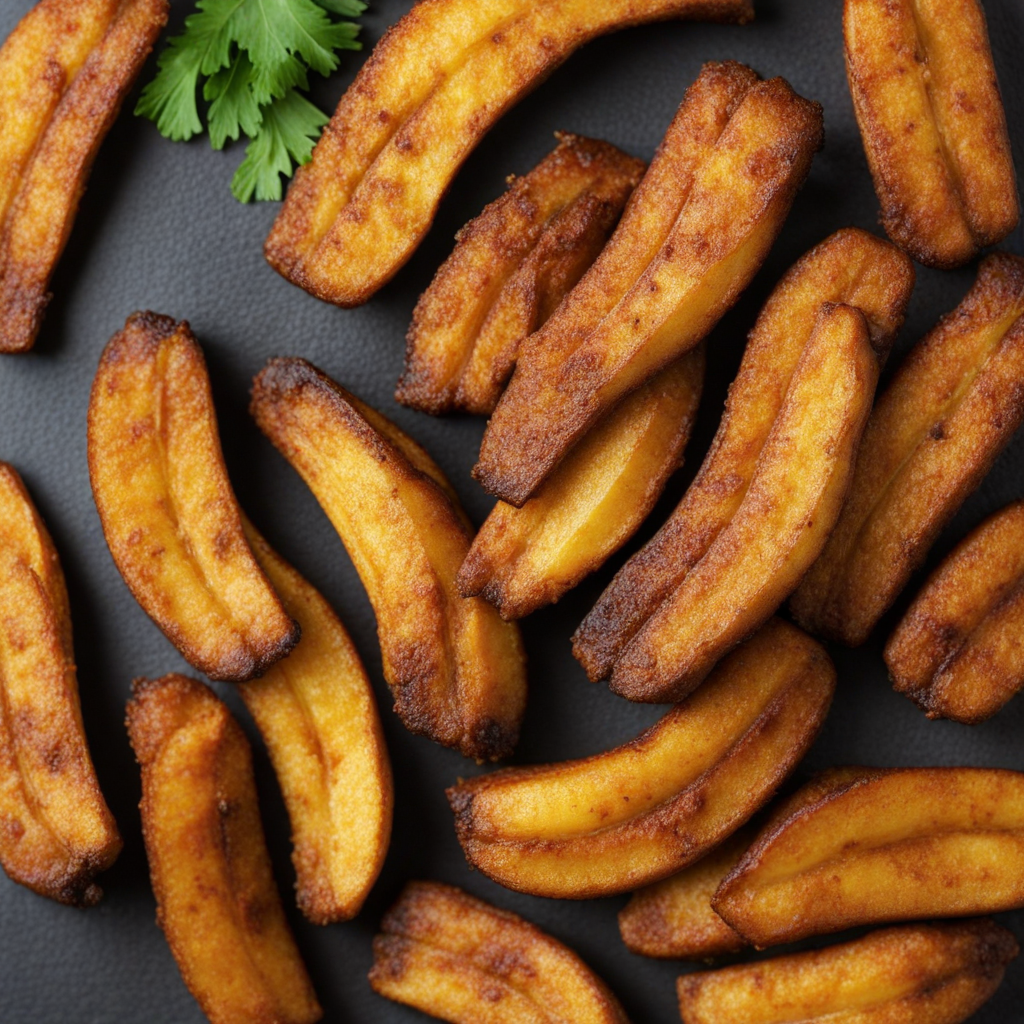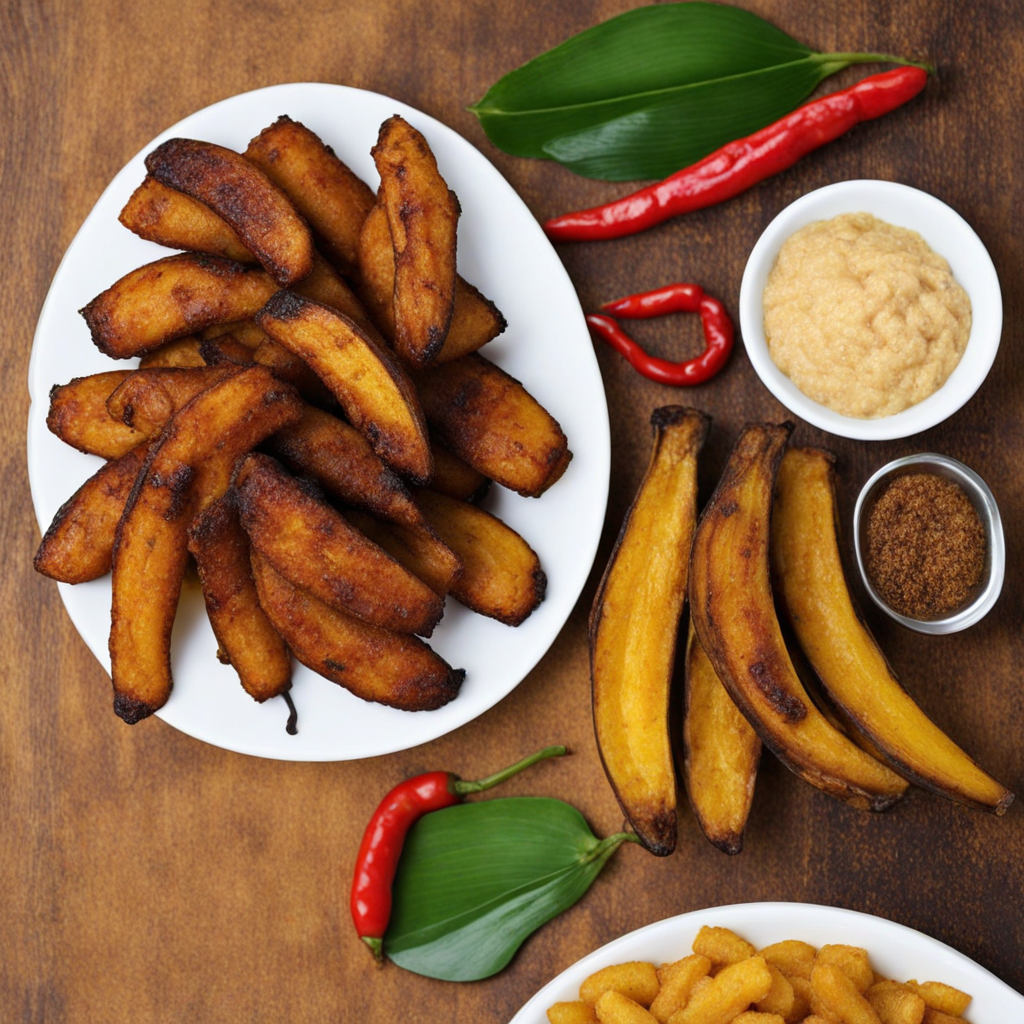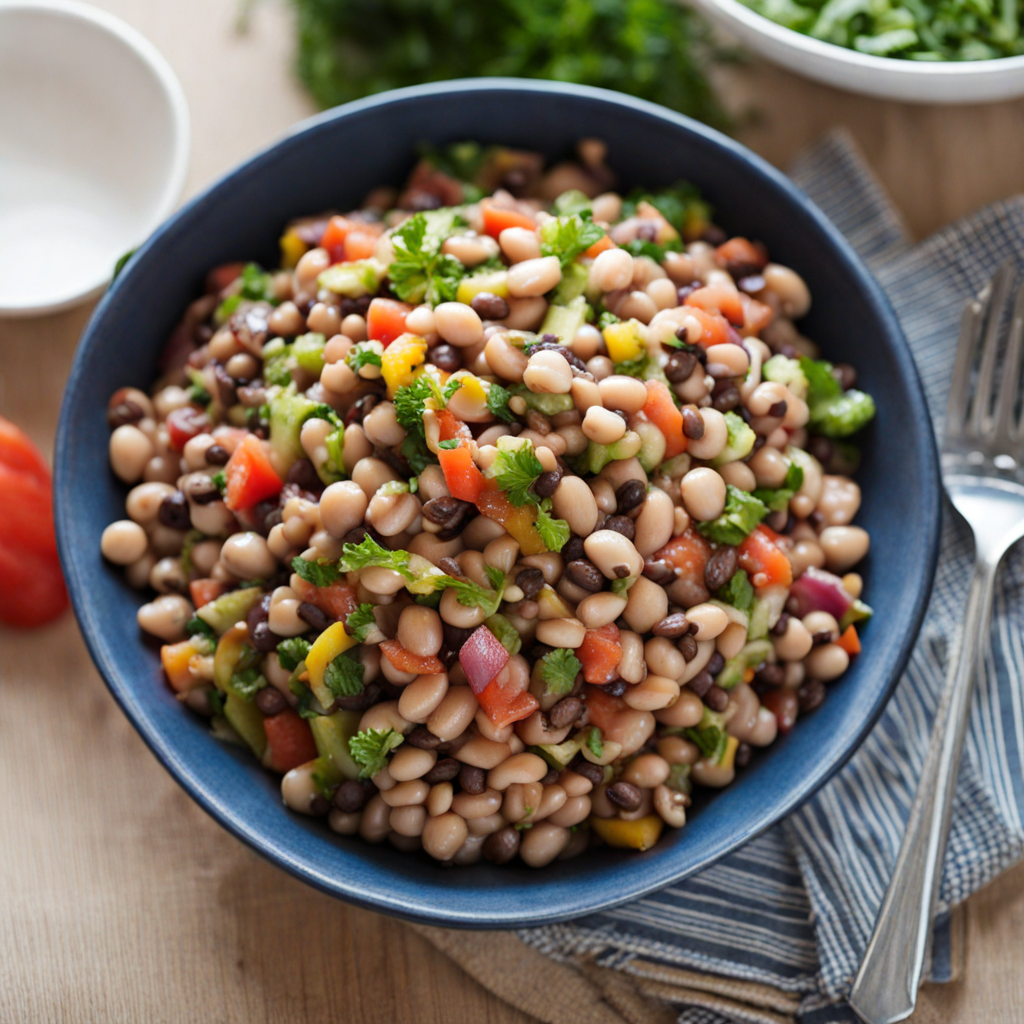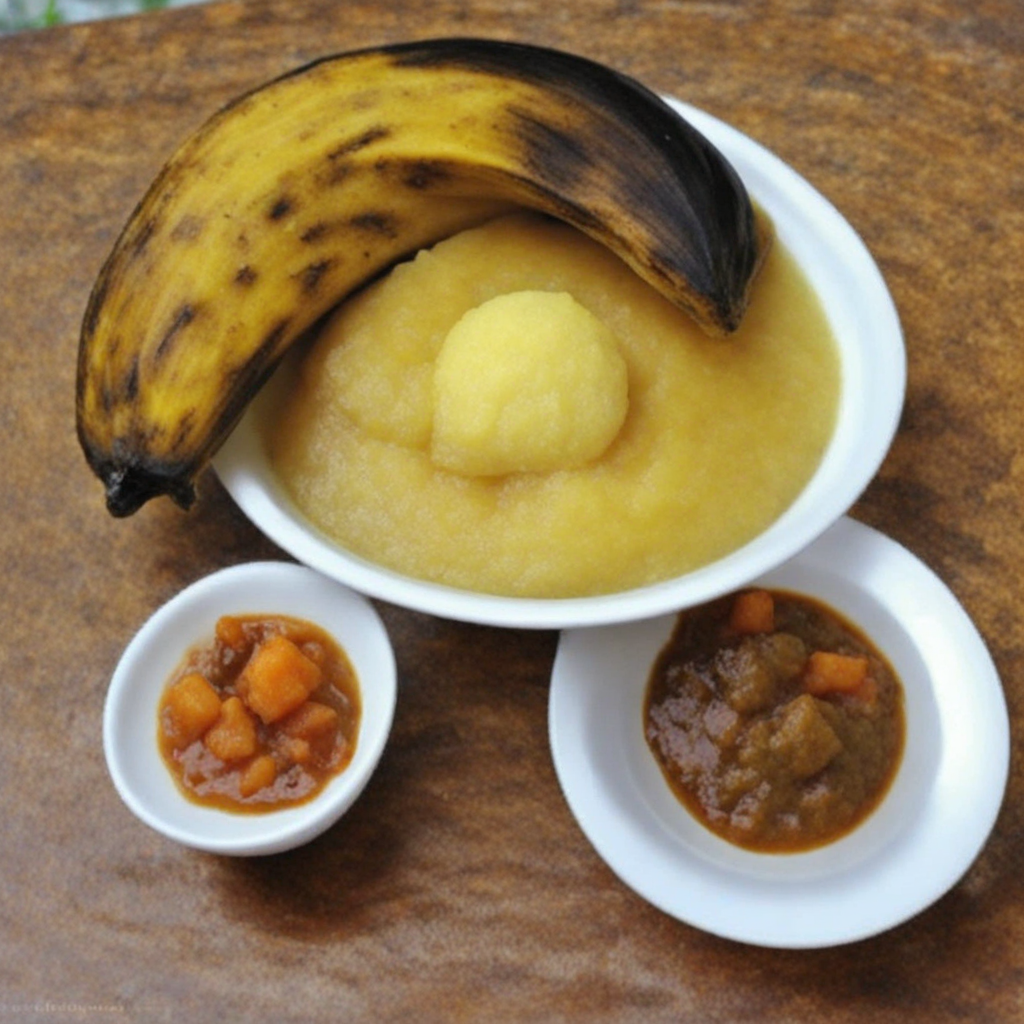Kelewele
Kelewele is a delightful Ghanaian street food made primarily from ripe plantains, which are known for their sweet, starchy taste. The process begins with selecting the perfect plantains, usually slightly overripe, to ensure they are sweet and flavorful. These plantains are peeled, diced into bite-sized cubes, and then marinated in a blend of spices that typically includes ginger, garlic, and a hint of pepper, giving them a warm and aromatic kick. The marination process allows the spices to penetrate the sweetness of the plantains, creating a harmonious balance of flavors that is both comforting and invigorating. Once the plantains have absorbed the spices, they are deep-fried until they reach a perfect golden brown, resulting in a crispy exterior that encases a soft and tender center. The frying process enhances the natural sweetness of the plantains, while also adding a satisfying crunch that makes each bite an experience in itself. Kelewele is often served hot, making it an irresistible snack or side dish, and is frequently enjoyed with a sprinkle of groundnuts (peanuts) for an added layer of texture and nuttiness. This dish is not just a treat for the taste buds; it is also a cultural staple in Ghana, often enjoyed during celebrations, gatherings, or as a quick street food option. Kelewele is typically paired with spicy sauces or enjoyed on its own, allowing the flavors to shine through. The combination of sweet, spicy, and savory elements makes Kelewele a unique culinary adventure, inviting food lovers to explore the rich and diverse tastes of Ghanaian cuisine.
How It Became This Dish
Kelewele: A Flavorful Journey Through Ghanaian Culinary Heritage #### Origins and Early History Kelewele, a beloved Ghanaian dish, is made from ripe plantains that are seasoned, fried, and often enjoyed as a snack or side dish. The word "kelewele" itself is derived from the Akan language, where "kele" refers to plantains and "wele" means spicy or peppery. This dish embodies the vibrant flavors and culinary traditions of Ghana, a nation known for its rich agricultural produce and diverse food culture. The origins of kelewele can be traced back to the Akan people of Ghana, who have long cultivated plantains as a staple food in their diets. This starchy fruit is not only versatile but also widely available in West Africa. The practice of frying seasoned plantains likely emerged as a practical way to prepare and preserve this abundant crop, transforming simple ingredients into a delightful dish. #### Cultural Significance Kelewele holds a significant place in Ghanaian culture and cuisine. It is more than just a snack; it is a symbol of community, celebration, and the rich agricultural heritage of the region. Traditionally, kelewele is prepared during festivals, family gatherings, and special occasions, serving as a reminder of the joyous moments shared with loved ones. The aroma of frying plantains often wafts through markets and street stalls, creating a sense of nostalgia and connection to home for many Ghanaians. In Ghanaian society, food is a central aspect of social life. The communal sharing of dishes like kelewele fosters unity and bonds among family and friends. It is often enjoyed alongside other popular Ghanaian dishes such as jollof rice, waakye (rice and beans), or grilled meats, making it an integral part of a larger culinary experience. Kelewele's significance extends beyond just being a delicious treat; it also reflects the agricultural practices and local ingredients of Ghana. The dish showcases the use of spices and flavorings typical of the region, including ginger, cayenne pepper, garlic, and sometimes nutmeg or cinnamon. These ingredients not only enhance the taste but also connect kelewele to the diverse cultural influences that have shaped Ghanaian cuisine over centuries. #### Development Over Time As Ghanaian society evolved, so did the preparation and presentation of kelewele. The dish has undergone various transformations while retaining its core identity. Traditionally, kelewele was often prepared at home, with families passing down their unique recipes and methods through generations. However, with urbanization and globalization, the dish has found its way into restaurants and food stalls, making it accessible to a broader audience. Street food culture in Ghana has played a pivotal role in the popularization of kelewele. Vendors often sell it in bustling markets or on street corners, serving it hot and fresh. This has not only created a vibrant food scene but has also made kelewele a staple for busy urban dwellers seeking quick, flavorful bites. The affordability and simplicity of the dish have contributed to its widespread appeal, making it a favorite among both locals and tourists. In recent years, there has been a resurgence of interest in traditional Ghanaian foods, with chefs and home cooks alike experimenting with new variations of kelewele. Some have begun to incorporate innovative ingredients and techniques, such as baking instead of frying, or adding unique toppings like avocado or spicy sauces. These modern interpretations reflect a growing trend towards healthier eating without sacrificing flavor. #### Kelewele in Contemporary Ghana Today, kelewele continues to hold a cherished place in the hearts and palates of Ghanaians. It is often served at parties, weddings, and other celebrations, where it is enjoyed as a finger food or appetizer. Its popularity has transcended borders, with Ghanaian diaspora communities around the world sharing the dish with their friends and neighbors, introducing them to the rich flavors of West African cuisine. Furthermore, kelewele has become a symbol of national pride, representing Ghanaian culinary heritage on the global stage. Food festivals, cultural events, and cooking shows often feature kelewele, showcasing its versatility and appeal. Chefs are increasingly recognizing the importance of traditional dishes like kelewele in their menus, often pairing it with contemporary dishes to create fusion experiences that celebrate Ghana's culinary legacy. #### The Culinary Experience of Kelewele The preparation of kelewele is an art form in itself. The process starts with selecting the right ripe plantains—those that are slightly soft and have a golden-yellow hue. The plantains are peeled and cut into bite-sized pieces, before being marinated in a mixture of spices, typically including ginger, garlic, and pepper. This marination process is crucial as it infuses the plantains with rich flavors. Once marinated, the plantains are fried until golden brown and crispy on the outside while remaining soft on the inside. The frying technique can vary, with some opting for deep frying, while others prefer shallow frying for a lighter version. The final touch often includes a sprinkling of salt, and in some variations, a drizzle of honey or a squeeze of lime for added flavor. Kelewele can be enjoyed on its own or paired with a range of accompaniments. It is often served with groundnuts (peanuts), spicy pepper sauce, or as part of a larger meal. The combination of sweet, spicy, and savory flavors makes it a delightful experience that appeals to a wide range of palates. #### Conclusion Kelewele is more than just a dish; it is a culinary symbol of Ghana's rich history, culture, and agricultural heritage. Through its evolution, it has remained a beloved snack that brings people together, transcending generational boundaries and connecting Ghanaians to their roots. As the world becomes increasingly interconnected, kelewele stands as a testament to the enduring power of food in fostering community and celebrating cultural identity. Whether enjoyed at a street market in Accra or prepared at home, kelewele continues to delight and inspire, inviting everyone to partake in its flavorful journey.
You may like
Discover local flavors from Ghana







